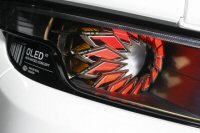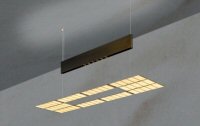Eleven German companies and research institutions have completed the So-Light project, supported by the German Ministry of Education and Research. An OLED project supported to the tune of EUR 14.7 million (US$19.88 million) by the German Ministry of Education and Research (BMBF) has come to an end after three and a half years.
The So-Light project addressed the complete OLED value chain, from primary OLED materials through to OLED-lighting applications. Several of the innovations created within the project will now be brought to market by project participants.

Fig.1. The project partners were Novaled, Sensient, University of Muenster, Fraunhofer-COMEDD, Aixtron, Ledon OLED Lighting, Fresnel Optics, Hella, Siteco, BMG MIS (former AEG MIS) and the University of Paderborn/L-LAB.
The project created several innovative results related to materials, processes, optical elements and process integration. These results were combined into design studies and prototypes, in order to strengthen Germany's leading role in the growing OLED-market. Some of the key results are listed below:
New materials
Novaled and Sensient jointly developed a new p-doped hole transport system with potential for lower absorption and lower cost scalability than previous materials. The jointly developed materials will be commercialized by Novaled.
Novaled made significant progress towards a fully air-stable n-doped electron transport layer. After more R&D work it is expected that this will lead to a commercial offering.
Sensient developed new host materials for OLED emitter layers which gave rise to efficiency enhancements in a reference OLED.
The University of Muenster, together with Sensient, synthesized new platinum(II)-complexes. Used as triplet emitters, they enabled outstanding high quantum efficiencies for Pt(II) complexes of up to 75% (for green) and high current efficiencies of up to 16 cd/A (green-yellow color).
Novel processes

Fig. 2. Aixtron and COMEDD jointly optimized the Organic Vapour Phase Deposition (OVPD) process on a Gen2 substrate size. The capability of this tool was demonstrated with the evaporation of the new p-HTL system developed by Novaled and Sensient.
In addition, Aixtron demonstrated a new high-deposition-rate process based on its novel STExS source concept. Evaporation rates of above 40 Angstrom/second were achieved for the p-HTL system with significantly reduced thermal exposure of the materials involved. This will allow much faster processing of sensitive organic materials compared to the current conventional process technology.
Novel panel technologies
Ledon OLED Lighting developed an efficient and robust electrical-contacting technology which also enabled better system efficiency and homogeneity.
In addition, the use of a special rear surface heat-distribution unit gave rise to better OLED emission uniformity without materially altering the level profile of an OLED panel.
Novel optical technologies
Fresnel Optics successfully processed an external, flat, primary optic directly on the rear surface of an OLED-panel including new features such as structured apertures or structured silvering.
Novel qualification methods
The University of Paderborn/L-LAB gathered photometric data on OLEDs specifically related to lifetime, lumen maintenance, illumination, color uniformity and UV degradation.
Design studies
Novel large area OLED panels from COMEDD (TABOLA) with an estimated mean time to failure (MTTF) of 20,000 hours have been used for several design studies: Hella made design studies for automotive indoor lighting and for a car rear-light with red OLEDs (Fig.1). Siteco manufactured a suspension luminaire containing OLEDs and point source LEDs (Fig. 2), and an exterior luminaire for building faade integration. BMB MIS developed a thin OLED backlight for LCD-signage application. These elements form the basis for a modular construction of ultra thin large area LCD-signage for the transportation business. About the Author Tim Whitaker is an Editorial Consultant with LEDs Magazine.





